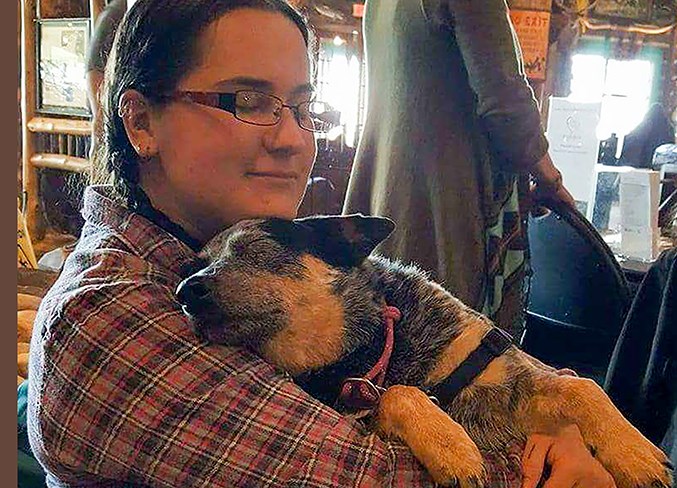The Alberta government announced a new initiative July 14 that will provide decals for businesses, schools and other facilities to indicate service dogs are welcome.
It’s part of a string of actions the government has taken – including changing legislation to free up training methods and increasing grant availability – to increase awareness of service dogs, said Sarah-Jane Petti, service dog team trainer and assessor at Hope Heels.
“People still think of service dogs – at least, people that are a little bit older – as really only for people that are blind, and that’s really not true anymore,” she said. “There are lots and lots of different service dogs out there.”
Petti listed psychiatric, mobility, diabetic alert and seizure alert as a few types of service dogs that can assist people through the day. For people with post-traumatic stress disorder (PTSD) or anxiety who have become house-bound, Petti said, a dog helps them get out.
The demand for service dogs has increased to such a point that government-qualified trainers are freezing two-year waitlists, Petti said. To help alleviate the strain on professional trainers, the government now allows owners to train their own dogs and have them assessed for service.
Airdrie resident Victoria Scattergood has been training her dog, Keet’ha, for two years. She said she struggles with anxiety and depression.
“She knows when I’m starting to have a down day,” Scattergood said. “She can pick up on that before I even notice, now. I totally get separation anxiety from her, because it freaks me out not having her there to support me. It’s such a deep, deep bond.”
According to Petti, to become a qualified service dog, dogs are required to perform at least three tasks that help mitigate a disability. Keet’ha is trained to guide Scattergood to a building exit if she’s having a panic attack, for example.
Service dogs can also detect low blood sugar in diabetics, or sense an oncoming seizure by changes in speech pattern or mobility.
An issue occurs when others start to interfere with a working service dog in a public space, however. Scattergood commented on the many requests she receives to pet her dog, or people challenging her need for a service dog because her disability isn’t visible.
“You wouldn’t go up to someone who’s got a cane and try to touch their cane, and try to talk to their cane,” Petti said. “Their dogs are working, and they’re trained to not interact with other people. People don’t always know that.”
Petti said she’s also heard of service dogs and their owners being turned away from businesses if the dog’s vest isn’t the right colour – but these vests aren’t always the same, she noted. However, she said she hopes the new decals will continue the trend of education and awareness.
“I think it’s a good start,” Scattergood said. “The next step would definitely be to educate people on what a service dog actually is.”


